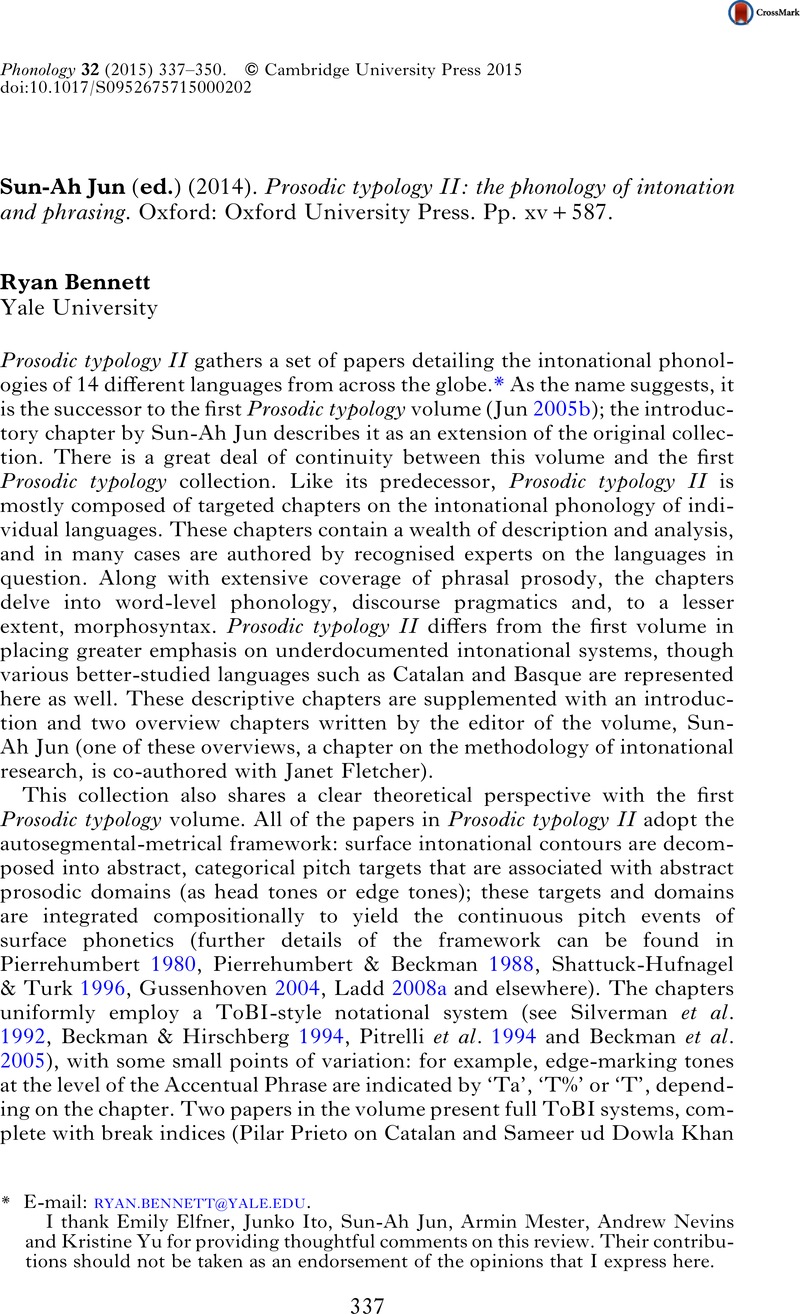Crossref Citations
This article has been cited by the following publications. This list is generated based on data provided by Crossref.
Yu, Kristine M.
2021.
Tonal marking of absolutive case in Samoan.
Natural Language & Linguistic Theory,
Vol. 39,
Issue. 1,
p.
291.
Roseano, Paolo
and
Rodriquez, Francesco
2023.
Tune-text accommodation in Optimality Theory: an account of Southern Valencian Catalan yes-no questions.
Folia Linguistica,
Vol. 57,
Issue. 1,
p.
81.



